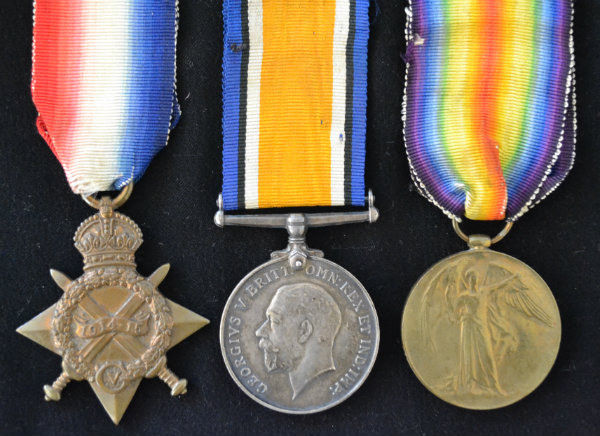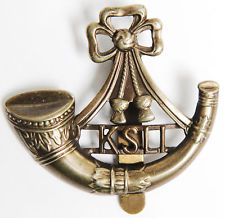Personal Details
Born: 15 July 1880 in Whitchurch, Shropshire and baptised 13 August the same year in St. Alkmund’s Parish Church.
Family: He was the sixth of eight children born to James Williams, a carter, and his wife Harriet. No marriage can be traced for Harry.
Residence: At the time of his baptism, the family were living in Green End, Whitchurch. By 1881 they were living at 3 Railway Inn Yard, where they continued to live until at least 1901. In 1911 he had moved next door to number 5, living with his brother James and his family. The 1919 Absent Voters’ Register for him has an address of 11 Alkington Road, Whitchurch. In 1939 and until his death he was living at 18 Highgate, Whitchurch.
Employment: In 1901 and 1911 he was a general labourer; in 1939 he was a carpenter helper.
Died: In 1947 in Whitchurch, aged 67 and was buried on 22 August the same year in Whitchurch cemetery.
Military Details
Regiment: King’s Shropshire Light Infantry
Rank: Private
Service Number: 11639
Date of Enlistment: Before 22 May 1915
Date of Discharge: 5 April 1919
Reason for Discharge: Demobilisation
Other Information: He was twice wounded, in 1915 and 1917, and was entitled to wear a wound stripe. He was reported missing on 13 May 1918, was confirmed prisoner of war 16 October 1918 and returned 1 January 1919. His nephews Frederick William Williams and John Thomas (Jack) Williams and step nephew James Bithell also served in WW1.
John was awarded the Campaign Medals (1915 Star, Victory and British War Medals)

The 1914 Star (also known as 'Pip') was authorised under Special Army Order no. 350 in November 1917 and by an Admiralty Fleet Order in 1918, for award to officers and men of the British and Indian Expeditionary Forces who served in France or Belgium between 5 August and midnight of 22–23 November 1914. The former date is the day after Britain's declaration of war against the Central Powers, and the closing date marks the end of the First Battle of Ypres.
The 1914–15 Star (also known as 'Pip') was instituted in December 1918 and was awarded to officers and men of British and Imperial forces who served against the Central European Powers in any theatre of the Great War between 5 August 1914 and 31 December 1915. The period of eligibility was prior to the introduction of the Military Service Act 1916, which instituted conscription in Britain.
The British War Medal (also known as 'Squeak') was a silver or bronze medal awarded to officers and men of the British and Imperial Forces who either entered a theatre of war or entered service overseas between 5th August 1914 and 11th November 1918 inclusive. This was later extended to services in Russia, Siberia and some other areas in 1919 and 1920. Approximately 6.5 million British War Medals were issued. Approximately 6.4 million of these were the silver versions of this medal. Around 110,000 of a bronze version were issued mainly to Chinese, Maltese and Indian Labour Corps. The front (obv or obverse) of the medal depicts the head of George V. The recipient's service number, rank, name and unit was impressed on the rim.
The Allied Victory Medal (also known as 'Wilfred') was issued by each of the allies. It was decided that each of the allies should each issue their own bronze victory medal with a similar design, similar equivalent wording and identical ribbon. The British medal was designed by W. McMillan. The front depicts a winged classical figure representing victory. Approximately 5.7 million victory medals were issued. Interestingly, eligibility for this medal was more restrictive and not everyone who received the British War Medal ('Squeak') also received the Victory Medal ('Wilfred'). However, in general, all recipients of 'Wilfred' also received 'Squeak' and all recipients of The 1914 Star or The 1914/1915 Star (also known as 'Pip') also received both 'Squeak' and 'Wilfred'. The recipient's service number, rank, name and unit was impressed on the rim.

